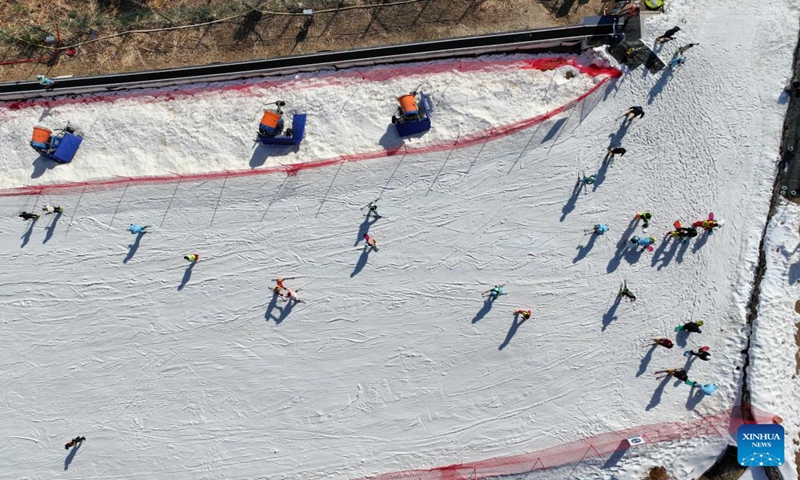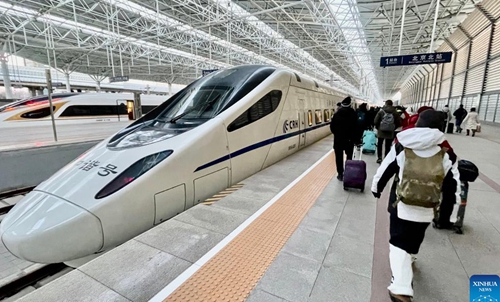As ski season approaches, China's northern regions pin hope on winter tourism frenzy

This aerial photo taken on Jan. 6, 2024 shows tourists skiing at a ski resort in Shuihou Township of Qianshan City, east China's Anhui Province. The tourist service of Shuihou Township at the foot of Tianzhu Mountain used to be limited to pure sightseeing in the mountainous areas. (Xinhua/Du Yu)
As ski season approaches, many places in northern China are launching ski tourism projects, with related products seeing a surge in pre-sales during the "Double 11" online shopping festival on travel platforms.
Industry experts suggested that the tourism offerings will drive growth in the winter sports market.
During this year's "Double 11" shopping festival, Bonski, a major operator of domestic indoor ski resorts, launched packages starting at 499 yuan ($68.94), including hotel stays and ski ticket passes redeemable in eight cities nationwide. Sales of its packages on its Fliggy flagship store are up more than 30 percent year-on-year, according to data from Fliggy sent to the Global Times.
Many renowned ski resorts have launched hotel and skiing packages featuring flexible accommodation options, allowing guests to customize their length of stay. Some popular packages on Fliggy reported reservation rates exceeding 40 percent.
Various places are launching ice and snow tourism products that combine cultural and recreational elements. For instance, the city of Zalantun in North China's Inner Mongolia Autonomous Region kicked off an ice and snow carnival on Sunday.
This winter, five cities in Northwest China's Ningxia Hui Autonomous Region will host more than 120 cultural and tourism events, with discounts on activities such as ice and snow sports, folk traditions, wine tastings, gourmet food and live performances, People's Daily reported on Saturday.
The ice and snow industry has recently received a significant policy boost. On November 6, China issued guidelines to promote the development of the sector.
The guidelines aim to establish China's ice and snow economy as a major growth driver, with a targeted market of 1.2 trillion yuan ($167 billion) by 2027, according to the General Office of the State Council.
By 2030, the core sectors of the ice and snow economy are anticipated to achieve high-level coordinated integration, making winter sport consumption a significant driver of the economy, with a market scale projected to reach 1.5 trillion yuan.
"A new market and business model are emerging. Skiing, once primarily seen as a sport or fitness activity, has become a vacation experience, demanding a wider array of support services, including facilities, gear and ample accommodation," Zhang Lingyun, executive editor-in-chief of Tourism Tribune, told the Global Times on Tuesday.
The market for sport equipment will grow too, with rising demand for outdoor apparel, ski gears, sports drinks and food, Zhang added.
He noted that market demand is rising fast. When utilized effectively, ice and snow resources can yield significant economic benefits - not just as tourist attractions but also as economic assets that can stimulate an extended value chain, including tourism services, road infrastructure and more.
During the 2023-24 season, China's ice and snow tourism saw year-on-year growth of 38 percent in visitor numbers and a 50 percent rise in revenue. Online travel data showed 132.5 percent growth in total spending on ice and snow tourism compared with the 2019-20 season, according to China's tourism authority.




